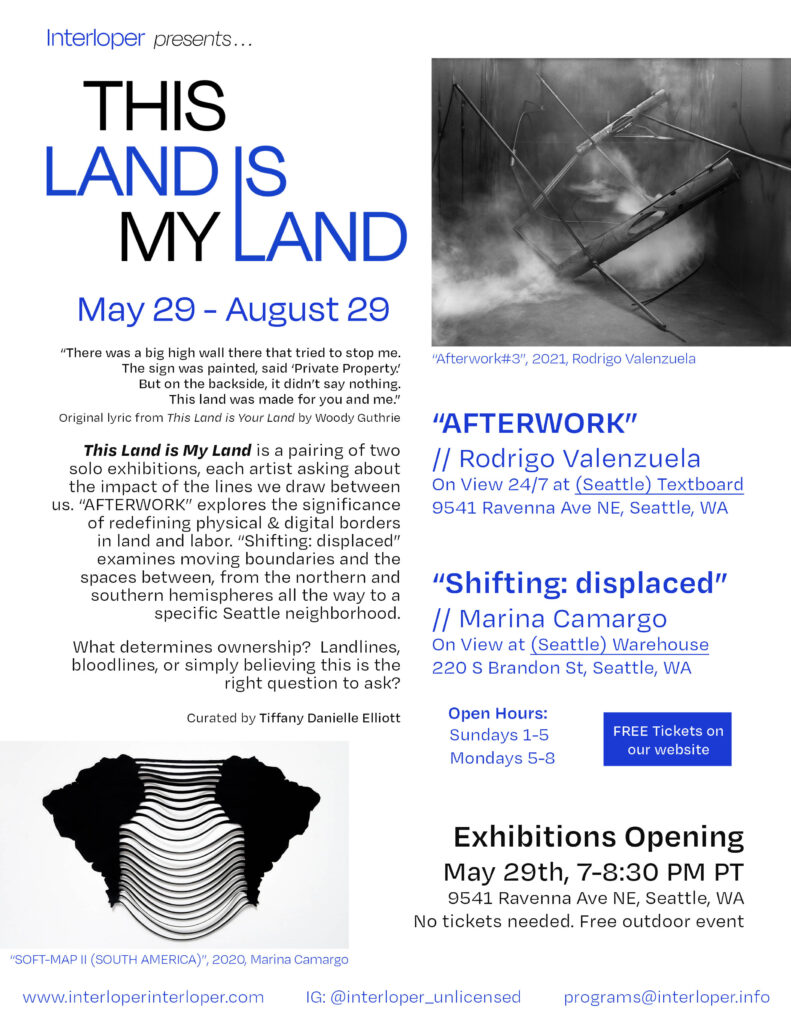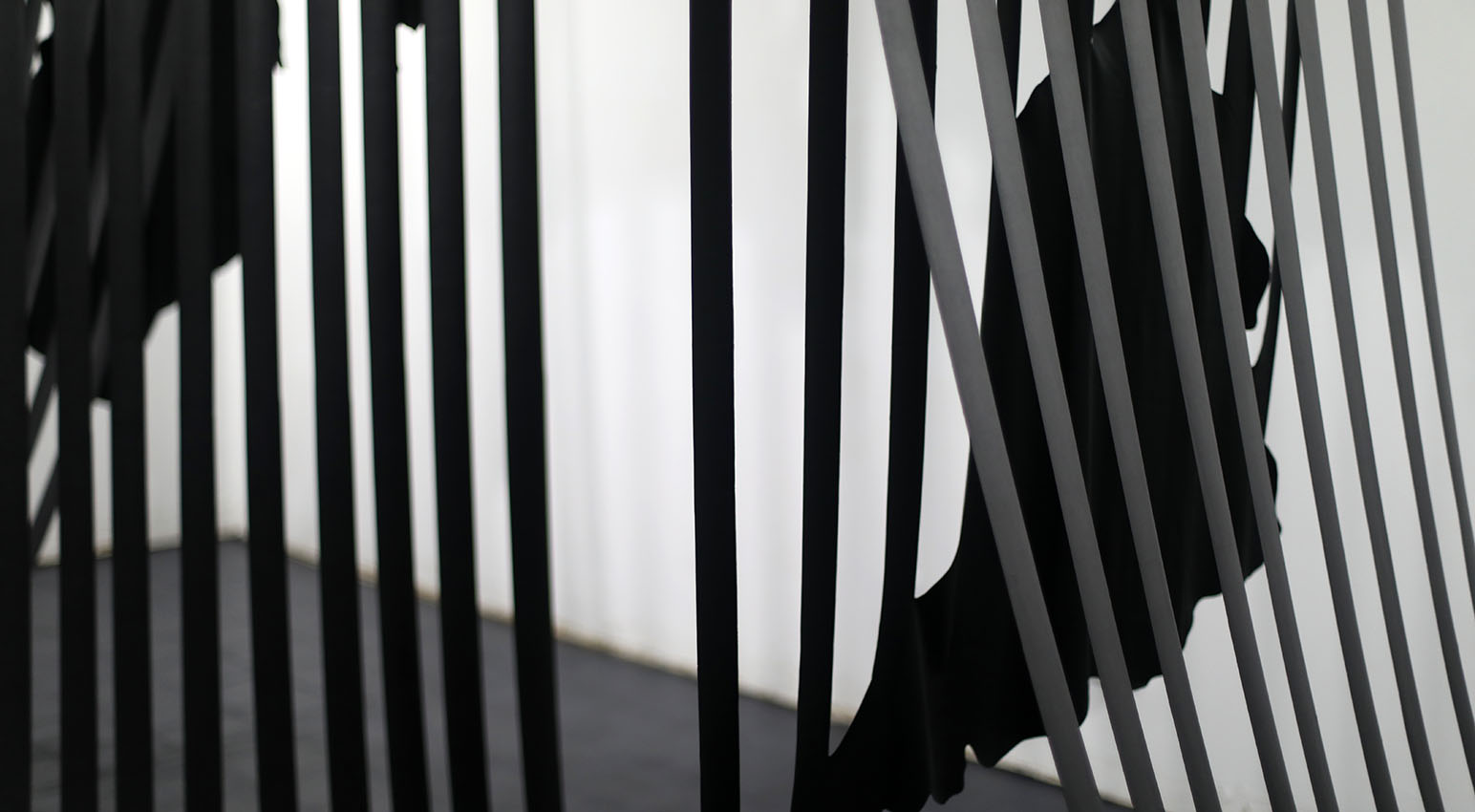
Shifting: Displaced
From 29th May until 29th August 2021.
Curated by Interloper / Photos by Tiffany Danielle Elliott.
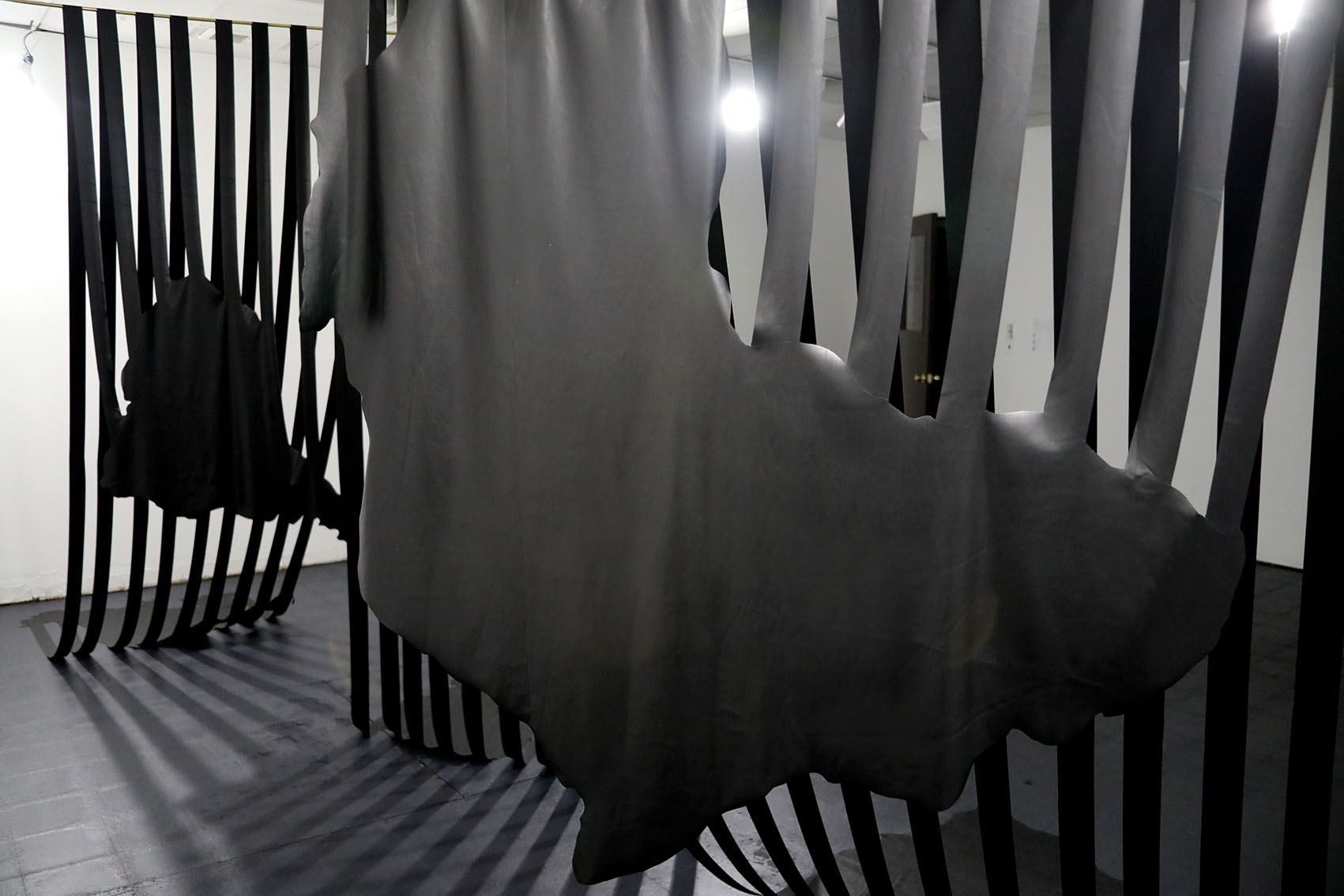
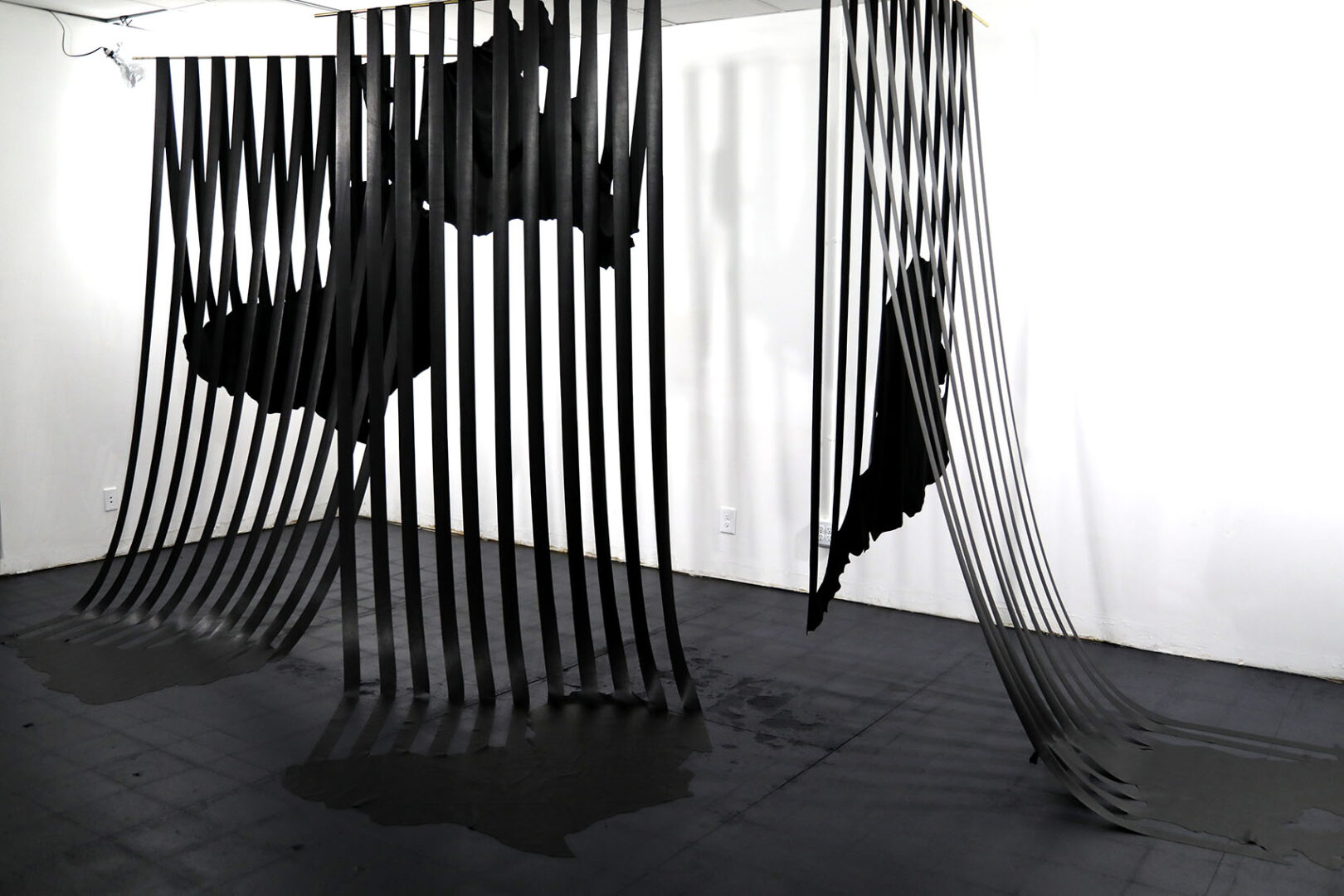
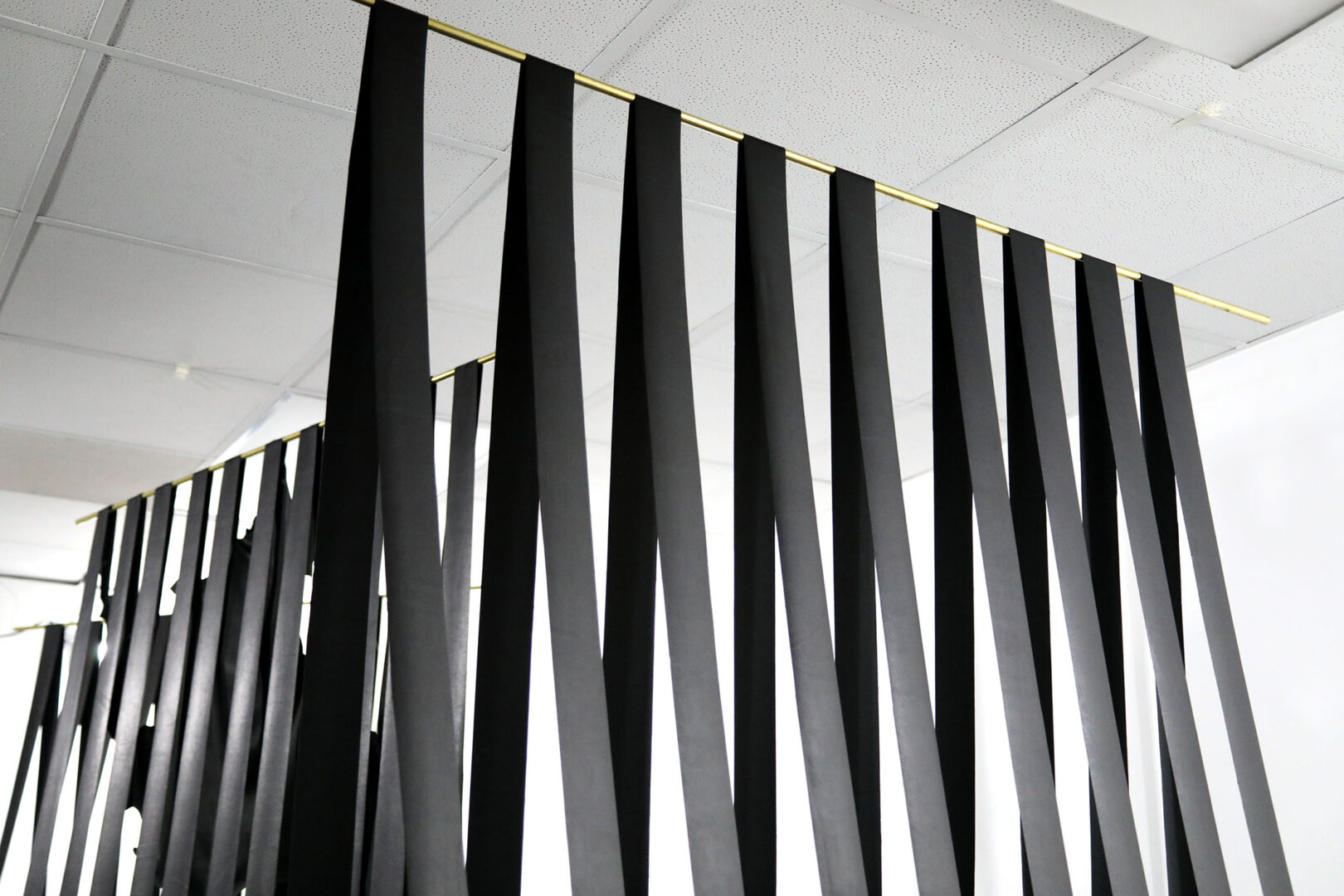
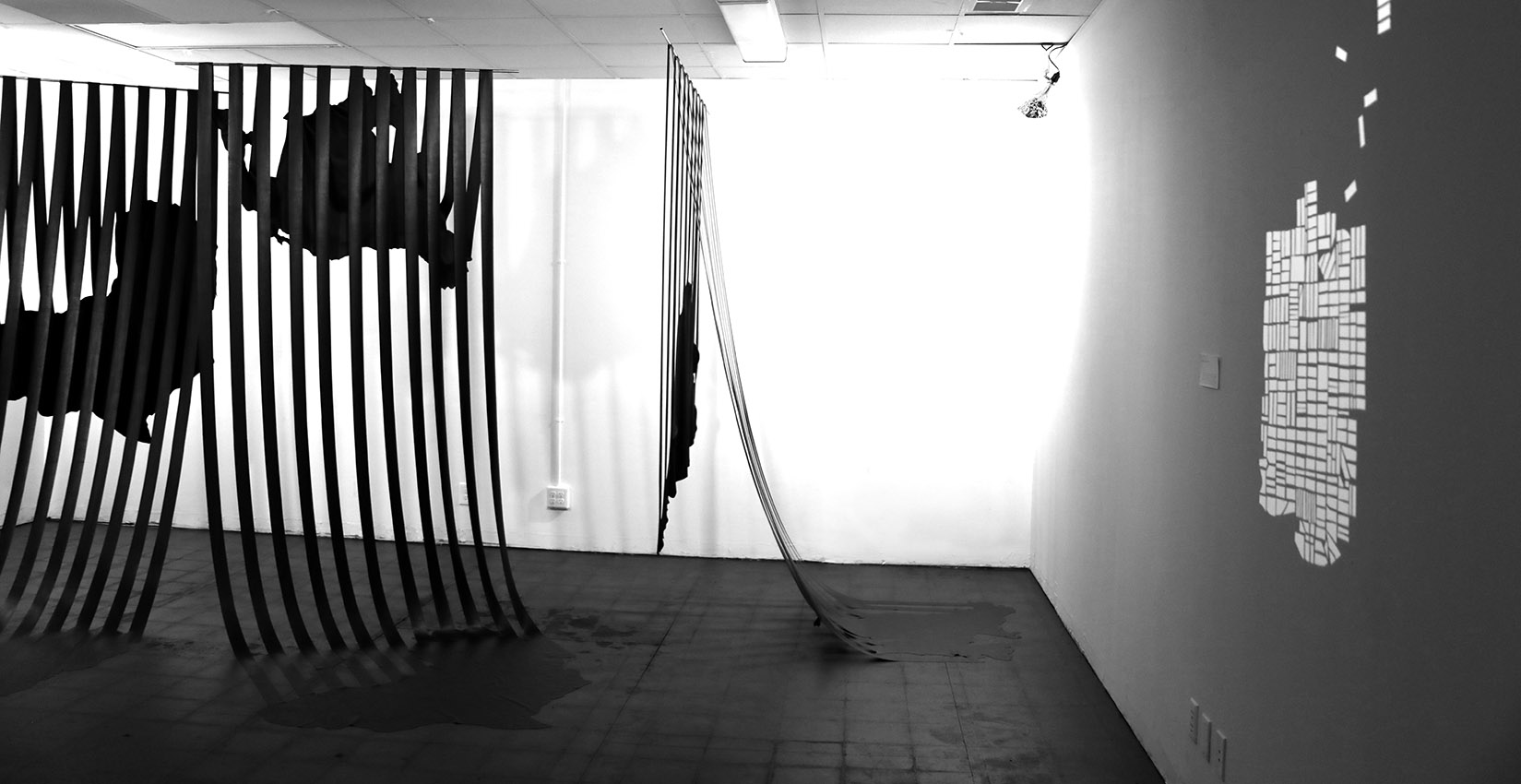
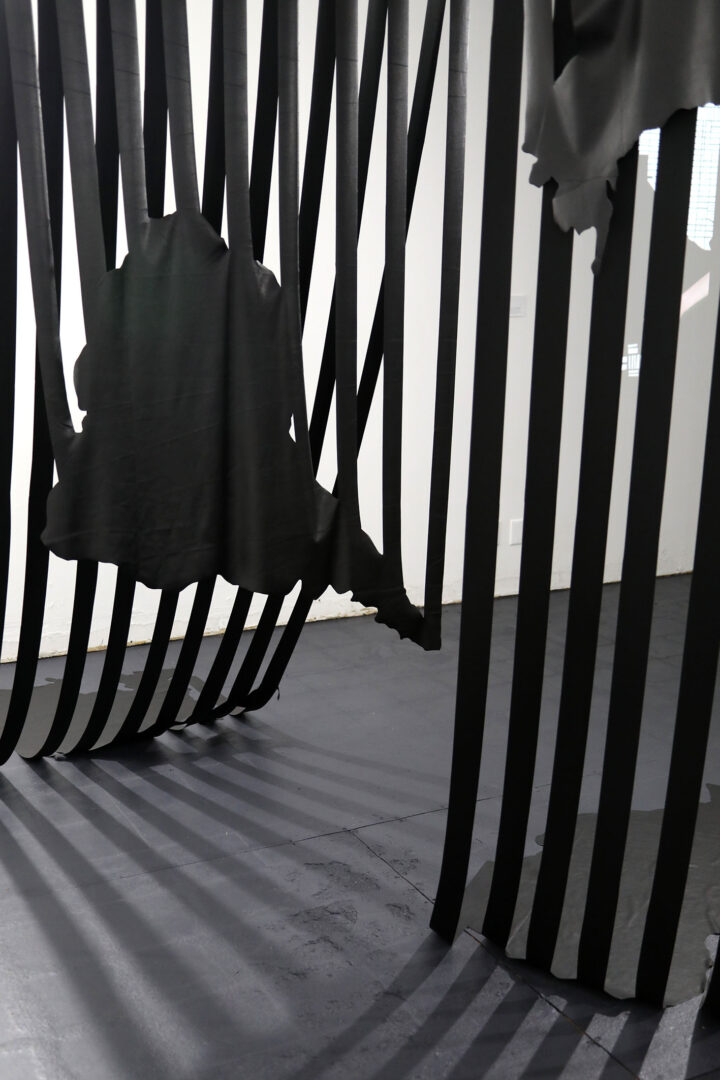
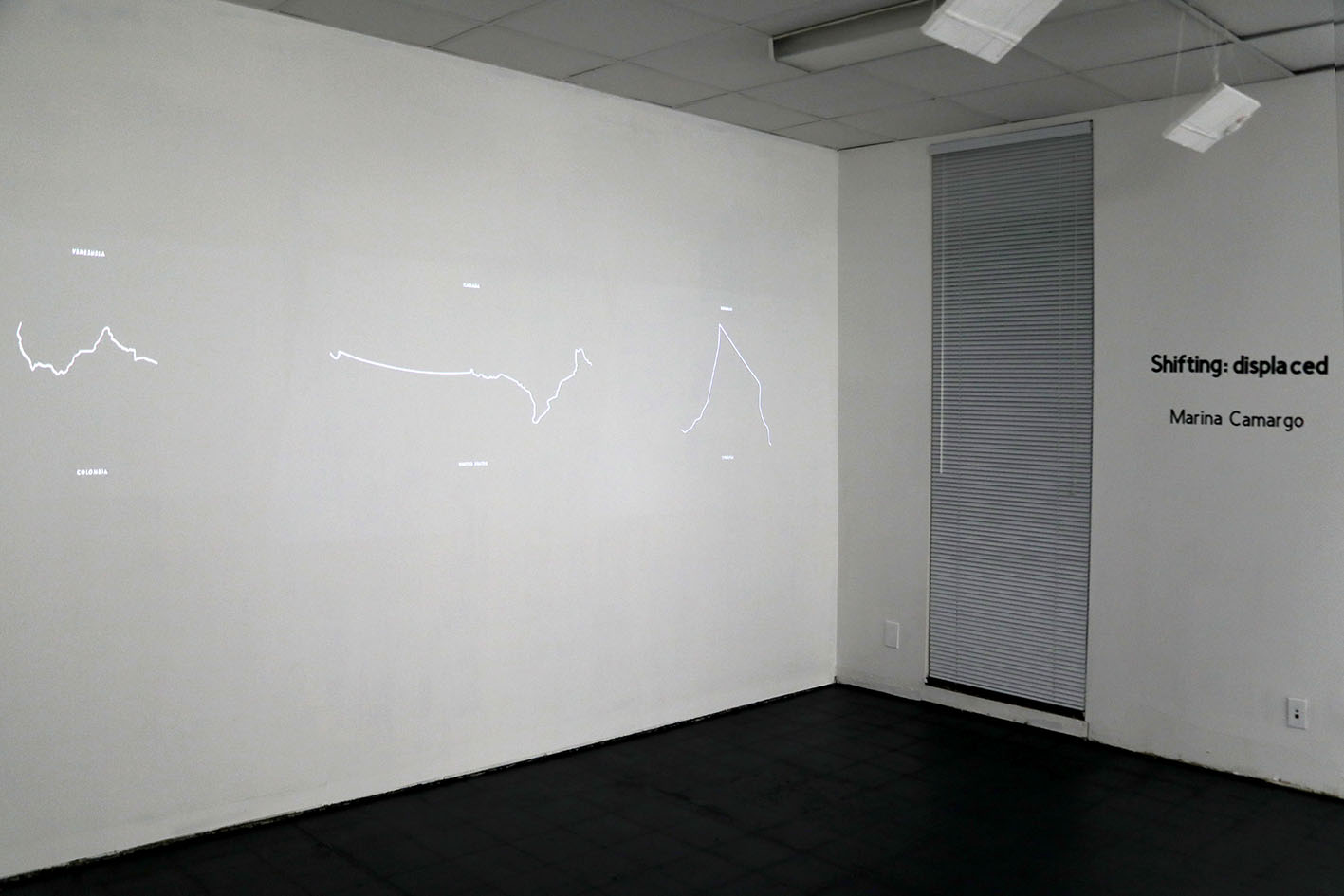
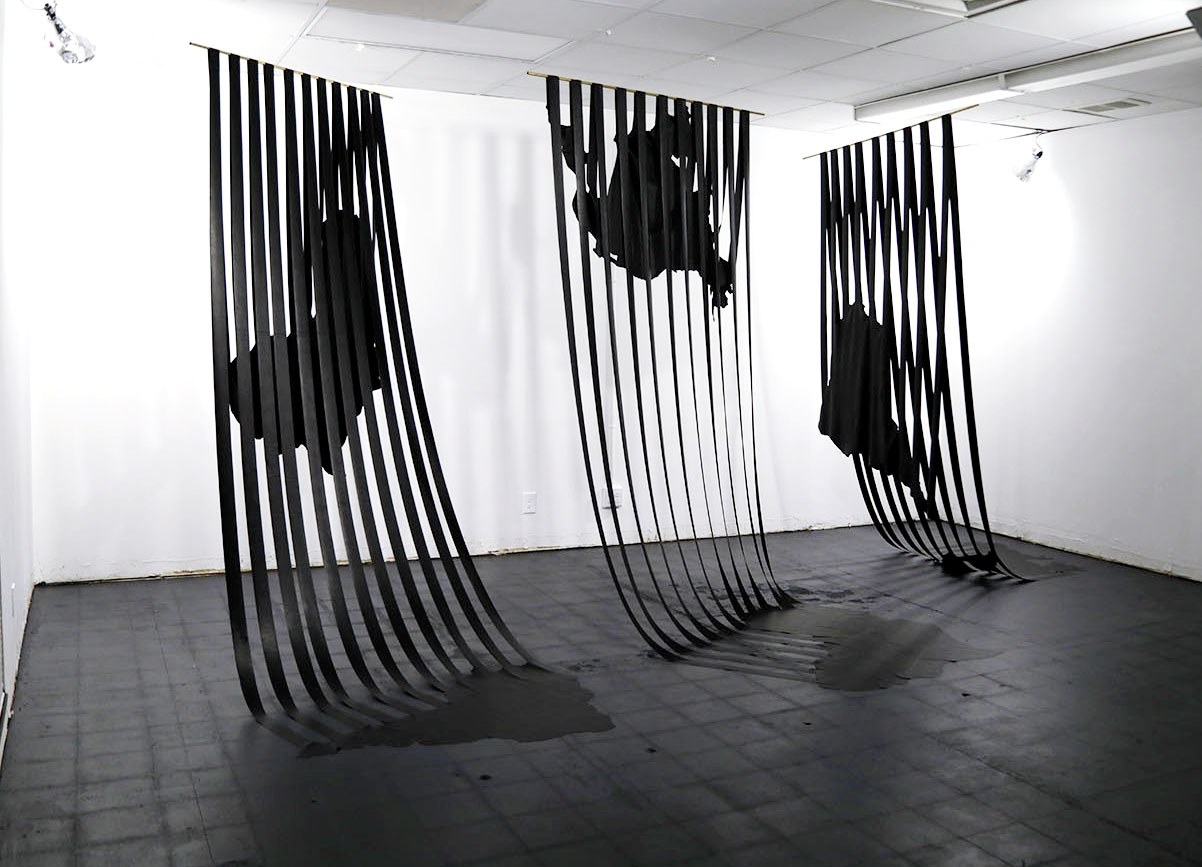
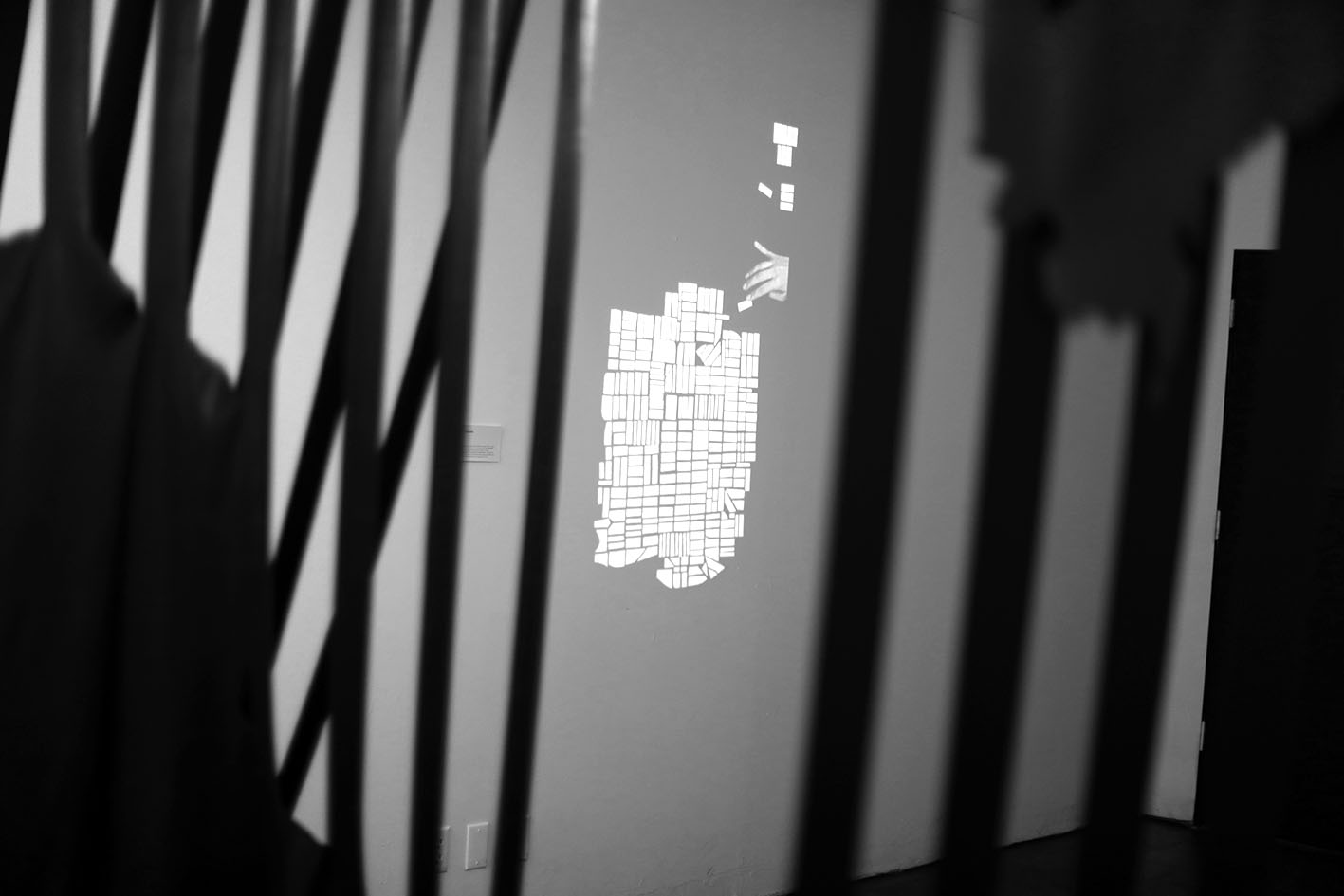
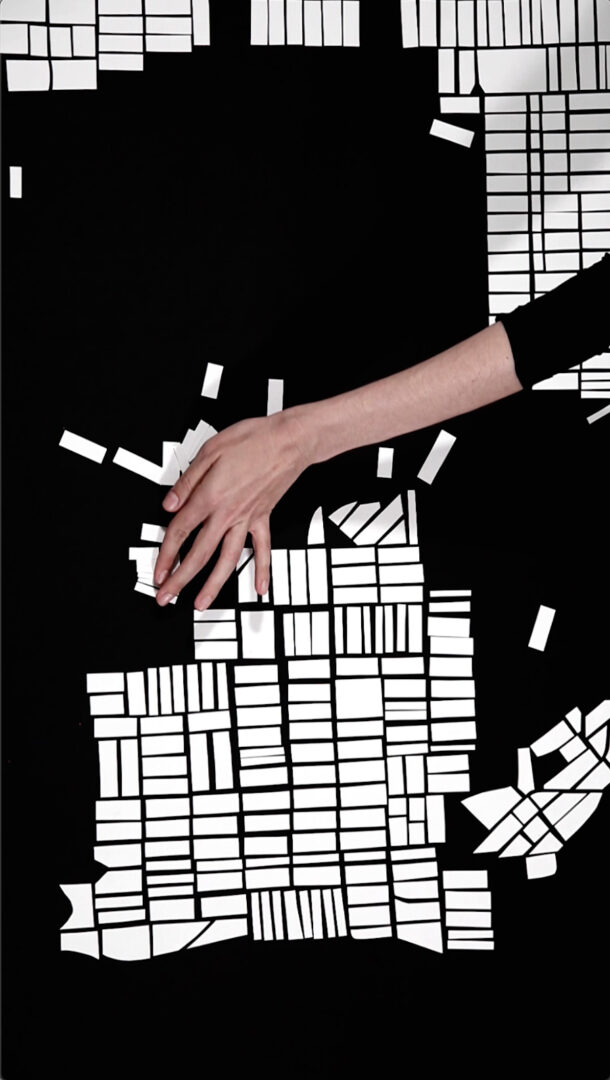



Shifting: displaced
Marina Camargo (2021)
Displacements through spaces reconfigure the maps. Pathways outline the space in-between. Routes form invisible maps constituted by flows, oceans, territories, and borders.
There is no route open for everyone to circulate. The same lines that draw the migration movements are the lines that trace the borderlines dividing countries and interrupting the flux.
A fragmented map emerges: where the seas are zones of passage and approximation between continents, where borders are geometric abstractions that divide continuous spaces, where we perceive a city map being transformed despite the life spontaneously arranged in the sidewalks and streets of the neighborhood.
“Soft-map: fluxes” (2021) is an installation made of three parts of cutout drawings. Each piece depicts the space between two continents: South America and Africa; Africa and North America; North America and South America. Although the continents are visible, the straps connecting them will occupy the exhibition space.
In “Songlines” (2019-2021), the political frontiers become abstract representations. The drawings of the borderlines of each continent are reframed into a scorebook and then transformed into music. A series of translations happen: the political borders transformed into graphics, the drawings translated into music. In this process, the borderlines are converted into something immaterial, essentially the opposite of the borders’ nature.
Projected city is part of a series of video works in which a section of the city plan is reproduced and then slowly transformed into another map. Another plan is configured by relocating small pieces depicting the squares as if a puzzle was being arranged. Every time Projected city is exhibited, a new video is made based on the city where it is shown.
Projected city 4 (Seattle) departs from depicting the neighborhoods of Adams and part of West Woodlands (it was based on the data showing the areas in Seattle where the higher number of household displacements was registered in 2019).
The physical, geographical, and urban displacements are part of a narrative of inhabited spaces and spaces traveled, provoking significant shifts in the perception of geopolitics, the sense of belonging to a specific place, and the possibility of building a homeland on the other side of the border.
“Shifting: Displaced” touches these intermediate spaces, be it the distance of an ocean or the immateriality of political divisions. From a conceptual position, where there is no dominant territory but movements of diverse spaces and displacements, I start to think about the maps of the worlds we live in and the worlds that inhabit us.
